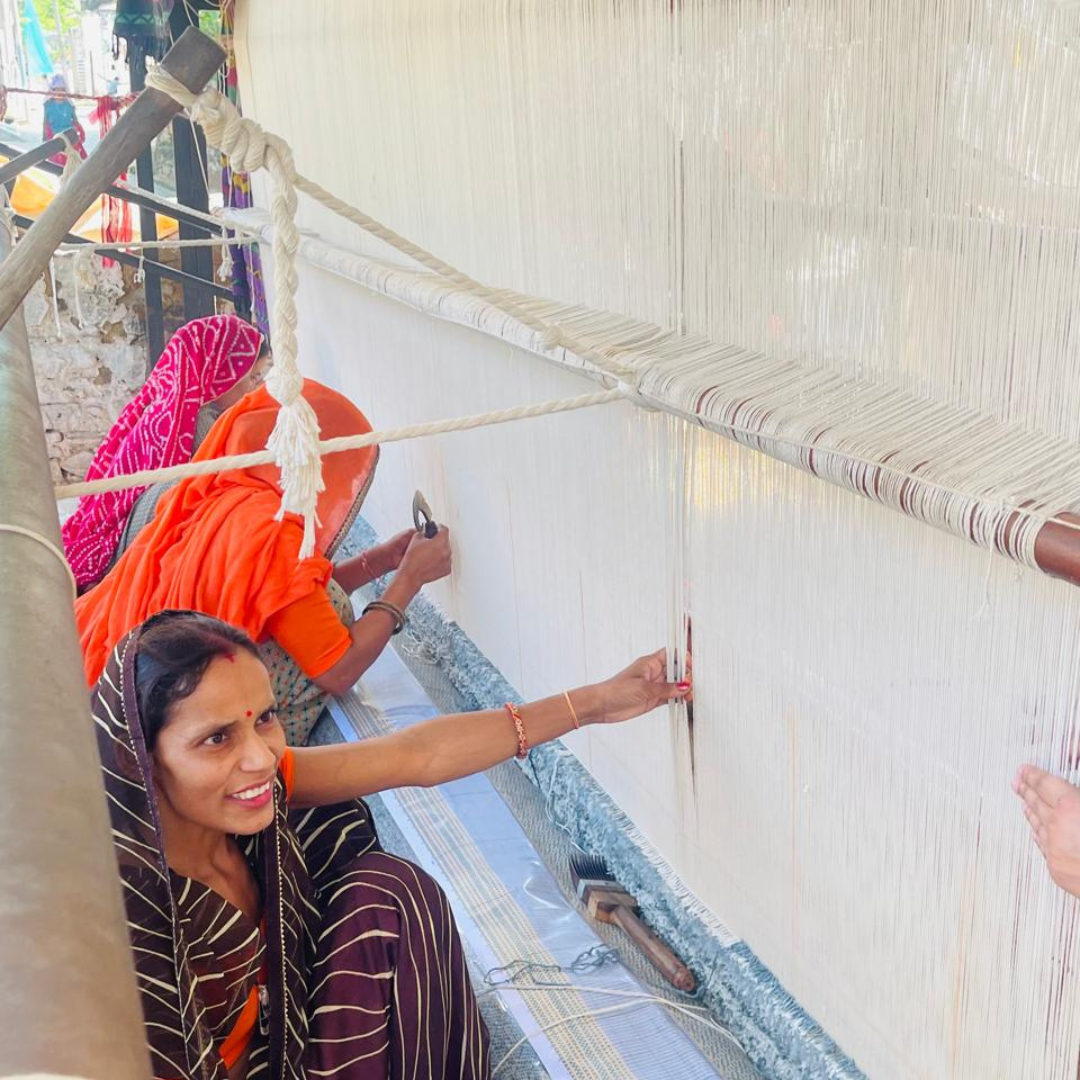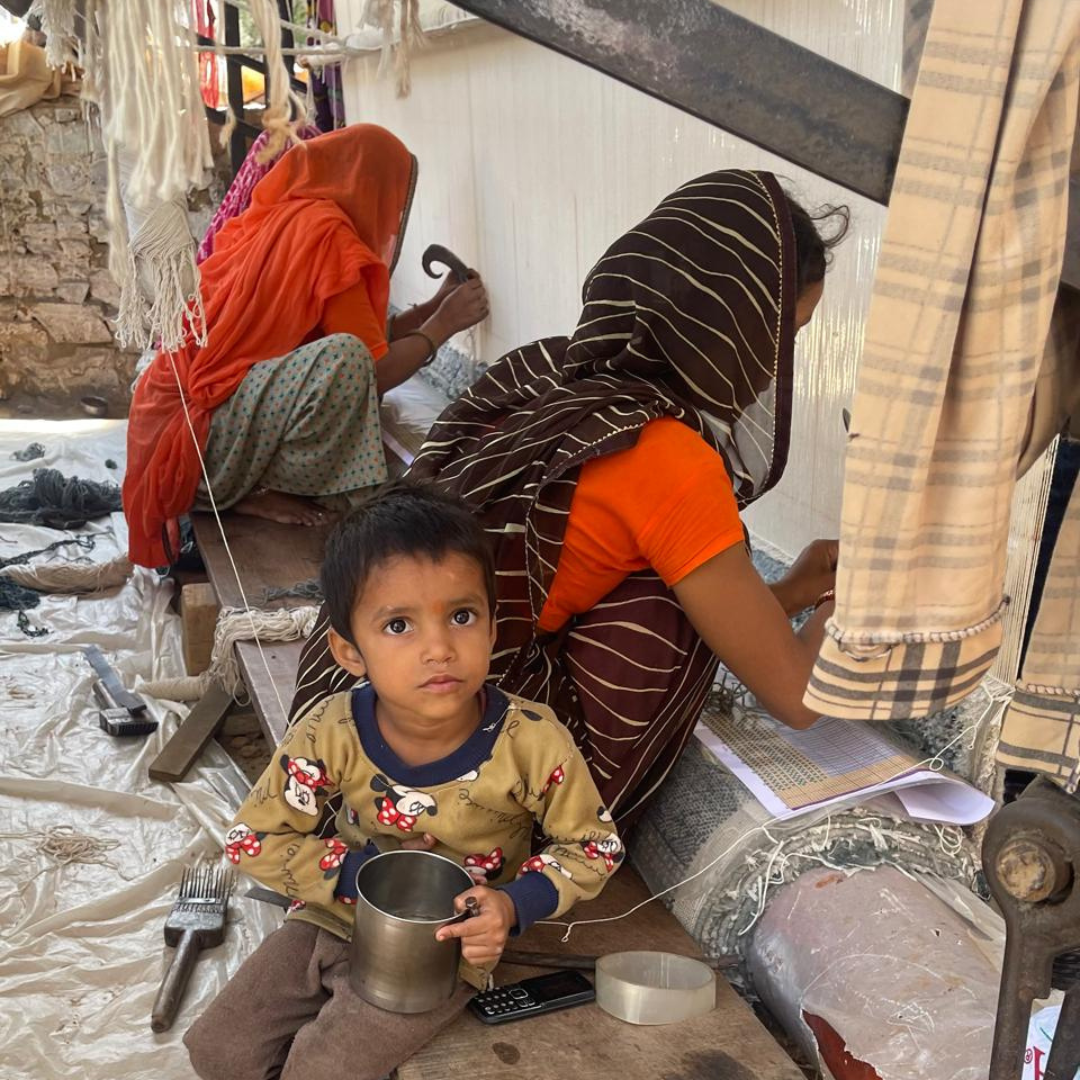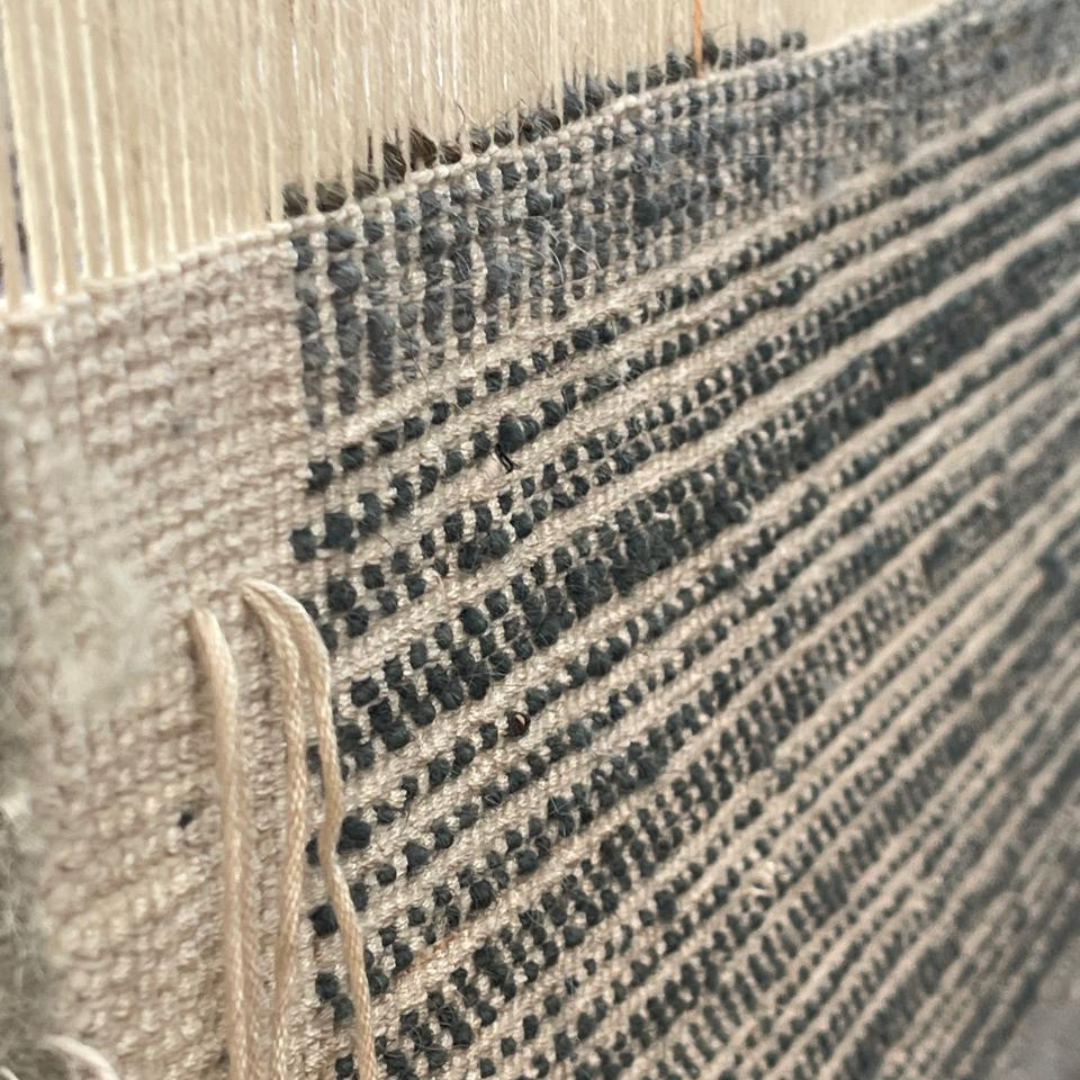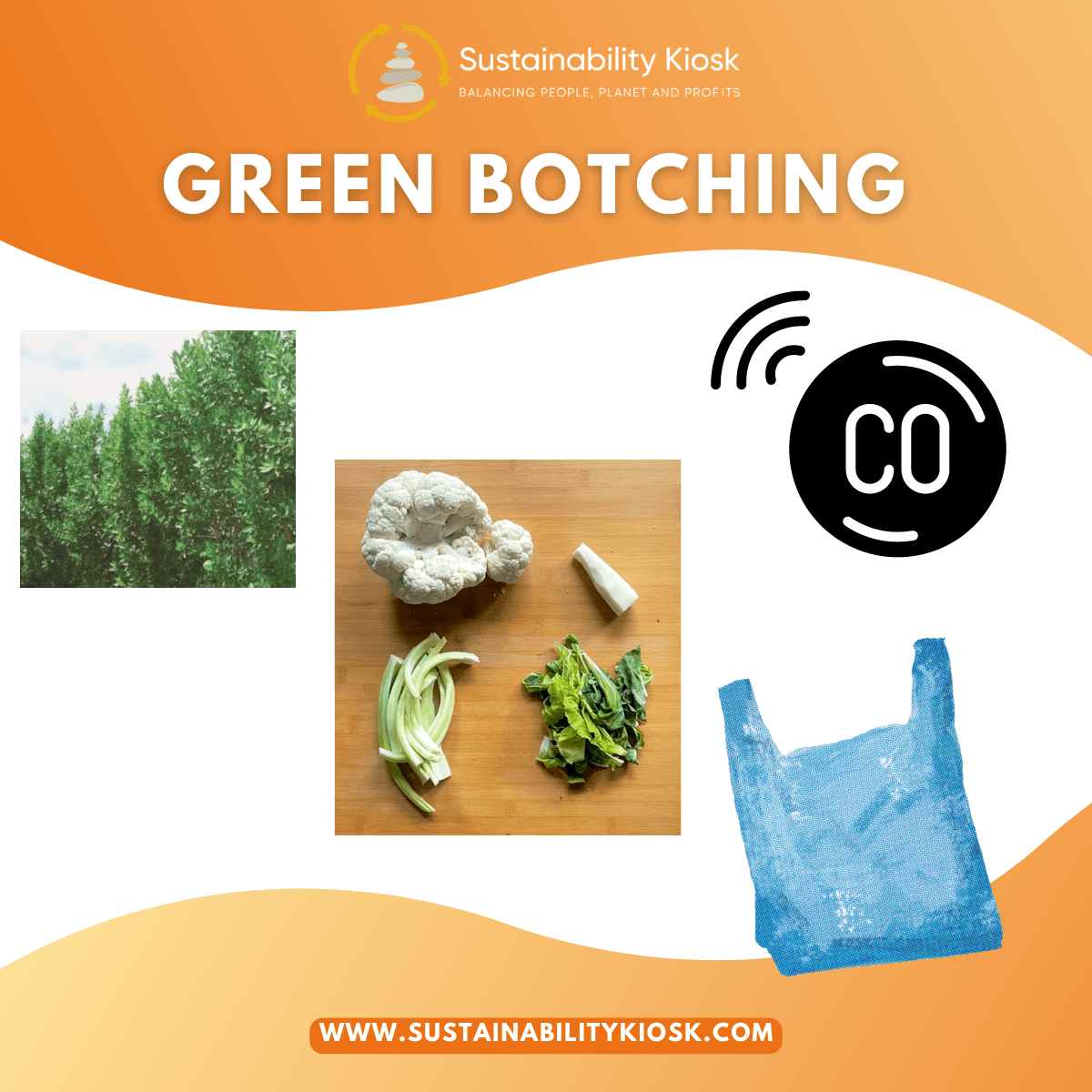Threads of Change: How Jaipur Rugs Weaves Culture, Empowerment, and Sustainability into Every Knot
A Morning in Manpura
In the quiet village of Manpura, just outside Jaipur, the day begins not with the creak of wooden frames but with the soft singing of women at big steel looms set up just outside their homes. The melodies keep time as fingers move in practiced rhythm, knot by knot; children drift in and out of the shade, neighbours pause to chat, and livelihoods take shape in song as much as in thread.
Many of the weavers cannot read or write, so they use rhythmic storytelling songs to memorise and pass on intricate patterns — a living echo of India’s historic tālīm tradition, where oral instructions and sung codes guided weavers long before written charts or digital maps existed.
I watched as Achi Devi, a soft-spoken woman, tied knot after knot, her movements deliberate yet fluid — each one forming part of a pattern she had long since memorised through rhythm and song. When I sat beside her, she smiled and said quietly, “I never thought I’d be able to send my children to school. Now I can support my home. This work has changed everything for us.”
Nearby sat Shanti Devi, the senior weaver in the village. Once in the same position as Achi, she has now educated all five of her children — one of whom proudly attends university — and today she oversees the women weavers of Manpura. Shanti helps them manage their looms, track production, and solve challenges, her calm authority woven from years of skill and perseverance.
Their stories mirror one another: women who began at the loom and rose through its threads, their lives transformed by opportunity and self-belief. They are two among thousands across rural India whose hands — and voices — have found strength through Jaipur Rugs, a pioneering organisation that has spent nearly five decades preserving India’s weaving heritage while empowering the communities behind it.
From Two Looms to a Movement
The story of Jaipur Rugs begins in 1978 with Nand Kishore Chaudhary, who started with just two looms and nine weavers from India’s so-called “untouchable” communities — a radical act of inclusion at the time. His vision was to restore dignity to artisans, preserve authentic weaving traditions, and connect their craft directly to global markets.
Historically, many of these artisans — particularly women — were marginalised and systematically exploited. Weaving communities were often from lower castes, denied fair wages, and excluded from mainstream economic systems. Middlemen controlled the trade, taking the lion’s share of earnings, while the women behind the looms remained invisible, working long hours without recognition or security.
The establishment of Jaipur Rugs and its foundation marked a turning point: it bypassed exploitative intermediaries, brought looms and income directly to artisans’ homes, and recognised their craft as both economically valuable and culturally significant. What was once a relationship of dependency became one of dignity and empowerment.
Achi Devi
Weaving at Home: Dignity and Independence
Jaipur Rugs uses a decentralized, home-based model, where artisans — over 85% of whom are women — weave from their own homes.
Before beginning, artisans participate in “Taleem” literacy programs, learning to read, write, and interpret patterns. They then receive six months of intensive weaving training before setting up looms in their homes. Artisans are paid line by line, ensuring transparent and fair wages.
For many women, this is their first personal income. With it comes agency: the ability to contribute to household finances, educate their children, and gain social respect within their communities. Dignity, once denied, becomes daily reality.
Manchaha: Imagination Meets Empowerment
Among Jaipur Rugs’ most distinctive initiatives is Manchaha, meaning “from the heart.” Through this program, artisans are invited to design their own rugs, often using leftover yarn that would otherwise go to waste.
The results are extraordinary: rugs that carry personal stories, cultural motifs, and bursts of imagination. Each piece is entirely unique, woven over five to six months and passing through 18 distinct finishing steps and the hands of many before completion.
“When I make my own design, it feels like the rug belongs to me,” one weaver explained. “It tells my story.”
Craft, Quality, and Sustainability
The journey of a Jaipur Rug begins quietly — with a single knot on a steel loom outside someone’s home — but it unfolds across months and many hands. Each rug is hand-knotted, its quality measured not just in knots per square inch but in the patience, skill, and cultural memory embedded in every thread. Unlike machine-made carpets, these can be repaired anywhere on their surface, designed to last for generations rather than seasons.
The materials tell their own story. Alongside traditional local and imported wool, artisans use bamboo silk, cotton, viscose, jute, hemp, and silk blends to create rugs of remarkable texture and character. Offcuts and leftover yarns — which might elsewhere be discarded — are reimagined through the Manchaha program, transformed into new expressions of colour and form. It’s a quiet act of circular design, where nothing is wasted and everything is given a second life through human creativity.
Once the weaving ends, another art form begins. They say each rug passes through 180 hands in a meticulous process. Washing, stretching, shearing, binding, embossing, inspecting — each step is carried out by artisans whose skills are entirely distinct from those at the loom. They don’t simply tidy edges; they coax the rug to life, revealing its texture and brilliance, ensuring that every piece leaving the workshop carries both beauty and integrity.
This layered collaboration makes each rug not just a product, but a collective achievement of craftspeople — a living testament to cultural skill passed through generations.
Beyond Income: A Holistic Approach
The Jaipur Rugs Foundation extends its work far beyond weaving. It approaches development holistically, recognising that economic empowerment must go hand in hand with education, health, and leadership:
– Education programs support artisans and their children through literacy training, scholarships, and life skills.
– Healthcare services reach remote villages through door-to-door medical visits and eye check-ups, benefiting more than 67,000 people.
– Leadership & entrepreneurship initiatives help artisans step into supervisory roles, shifting power and pride to the grassroots.
For many artisans, gratitude has turned into quiet pride. As villagers now say of leaders like Shanti, “she can walk unveiled through the village.” Once confined to back rooms, she now holds her head high — a breadwinner, a mentor, a woman with agency whose work has redefined what empowerment looks like in practice.
From Global Goals to Village Realities
For those of us working in sustainability, the UN Sustainable Development Goals (SDGs) are familiar icons on reports and slides: No Poverty, Quality Education, Gender Equality, Decent Work, Reduced Inequalities, Responsible Consumption, Partnerships for the Goals.
But in Manpura, they’re not icons — they’re everyday life. They sit under shaded verandas where women weave outside their homes. They sound like children laughing nearby, now in school because their mothers have steady incomes. They look like lines of yarn sorted and reused, embodying circularity without ever naming it.
Projects like Jaipur Rugs translate global frameworks into lived realities. SDG 1 (No Poverty) becomes stable livelihoods for thousands of families. SDG 4 (Quality Education) is woven through Taleem literacy programs and scholarships. SDG 5 (Gender Equality) lives in the quiet confidence of women managing their own finances. SDG 8 (Decent Work and Economic Growth) isn’t a policy target — it’s the loom itself. SDG 12 (Responsible Consumption and Production) is expressed in circular design and repairability. And SDG 17 (Partnerships for the Goals) comes alive in the way artisans, designers, communities, and global markets collaborate.
This is sustainable development not as theory, but as practice — knot by knot, loom by loom.
Threads That Bind
As I left Manpura, Shanti Devi continued her work at the loom outside her home, surrounded by family. Each knot she tied carried more than yarn — it carried dignity, heritage, and hope.
When you run your hand across a Jaipur rug, you’re touching a story: one that bridges centuries-old tradition and contemporary global goals.
This is what true sustainability looks like — where craft, community, and culture are interwoven to create something enduring, not just for our homes, but for generations to come.
Learn More










